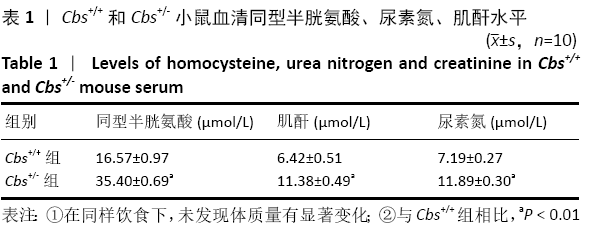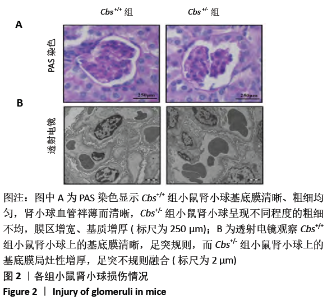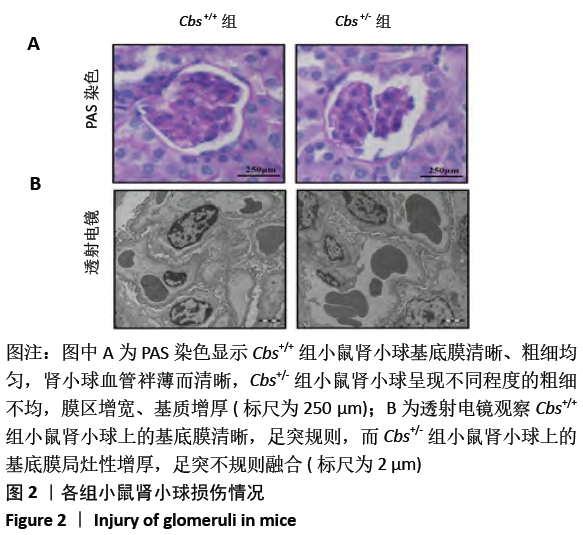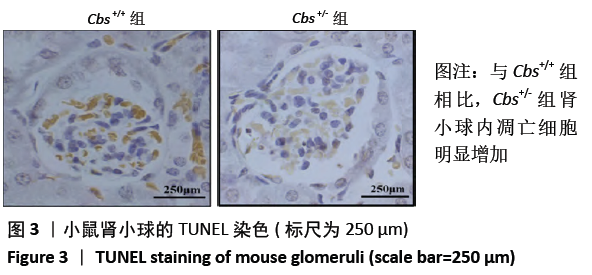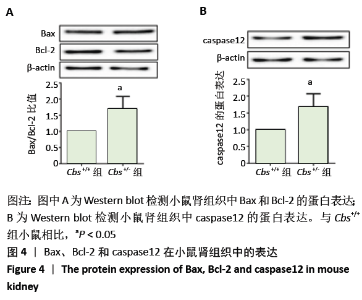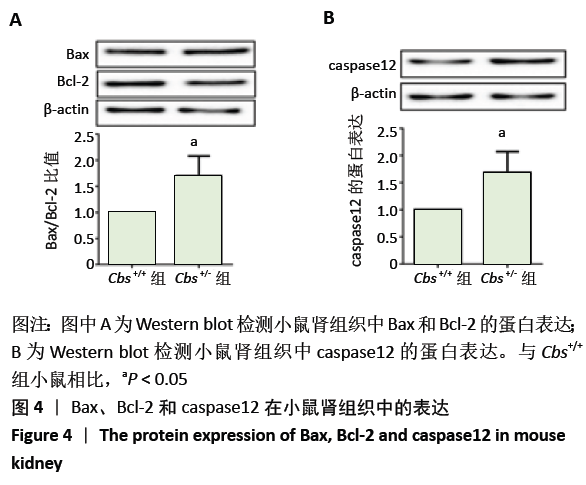[1] ZHOU YF, GUAN YF. Hyperhomocysteinemia and kidney diseases. Sheng Li Xue Bao. 2018;70(6):607-611.
[2] LONG Y, NIE J. Homocysteine in Renal Injury. Kidney Dis (Basel). 2016; 2(2):80-87.
[3] 张璞璞,袁吉祥,姚成立,等.高同型半胱氨酸血症及其所致动脉粥样硬化动物模型的复制[J].中国组织工程研究,2012,16(7): 1233-1236.
[4] SHI W, ZHOU Y, WANG H, et al. Synergistic interaction of hypertension and hyperhomocysteinemia on chronic kidney disease: Findings from the National Health and Nutrition Examination Survey 1999-2006. J Clin Hypertens (Greenwich). 2019;21(10):1567-1577.
[5] JI A, PAN C, WANG H, et al. Prevalence and Associated Risk Factors of Chronic Kidney Disease in an Elderly Population from Eastern China. Int J Environ Res Public Health. 2019;16(22):4383.
[6] RACHUBIK P, PIWKOWSKA A. The role of vasodilator-stimulated phosphoprotein in podocyte functioning. Cell Biol Int. 2019;43(10): 1092-1101.
[7] 丁宁,郭凤英,谢琳,等.miR-30a 在同型半胱氨酸致足细胞凋亡中的作用[J].广东医学,2019;40(6):762-766.
[8] YE Z, WANG C, ZHANG Q, et al. Prevalence of Homocysteine-Related Hypertension in Patients With Chronic Kidney Disease. J Clin Hypertens (Greenwich). 2017;19(2):151-160.
[9] SONG XF, REN H, ANDREASEN A, et al. Expression of Bcl-2 and Bax in mouse renal tubules during kidney development. PLoS One. 2012; 7(2):e32771.
[10] LEE JK, KANG S, WANG X, et al. HAP1 loss confers l-asparaginase resistance in ALL by downregulating the calpain-1-Bid-caspase-3/12 pathway. Blood. 2019;133(20):2222-2232.
[11] 田年秀,王晓磊,王涛,等.芪卫颗粒含药血清通过caspase12途径减轻高糖环境下肾足细胞损伤的机制研究[J].中华中医药杂志, 2018,33(5):1858-1862.
[12] SHANG K, LI H, LUO X. Cerebral venous sinus thrombosis due to hyperhomocysteinemia with cystathionine-β-synthase (CBS) gene mutation: A case report. Medicine (Baltimore). 2019;98(6):e14349.
[13] LOBB I, SONKE E, ABOALSAMH G, et al. Hydrogen sulphide and the kidney: important roles in renal physiology and pathogenesis and treatment of kidney injury and disease. Nitric Oxide. 2015;46:55-65.
[14] 孙玉真,陈立侠,蔡梅,等.慢性肾功能不全患者血清同型半胱氨酸和白细胞介素6的变化及意义[J].实用医学杂志,2008,24(16): 2811-2812.
[15] PERNA AF, INGROSSO D, SATTA E, et al. Metabolic consequences of hyperhomocysteinemia in uremia. Am J Kidney Dis. 2001;38(4 Suppl 1): S85-590.
[16] YE Z, ZHANG Q, LI Y, et al. High Prevalence of Hyperhomocysteinemia and Its Association with Target Organ Damage in Chinese Patients with Chronic Kidney Disease. Nutrients. 2016;8(10):645.
[17] YI F, LI PL. Mechanisms of homocysteine-induced glomerular injury and sclerosis. Am J Nephrol. 2008;28(2):254-264.
[18] 商慧,孙源博,李桂芹.同型半胱氨酸在慢性肾脏病患者肾损伤作用机制的研究进展[J].慢性病学杂志,2018,19(1):38-41..
[19] YIN J, NI B, LIAO WG, et al. Hypoxia-induced apoptosis of mouse spermatocytes is mediated by HIF-1α through a death receptor pathway and a mitochondrial pathway. J Cell Physiol. 2018;233(2): 1146-1155.
[20] YAO C, CAO X, FU Z, et al. Boschniakia Rossica Polysaccharide Triggers Laryngeal Carcinoma Cell Apoptosis by Regulating Expression of Bcl-2, Caspase-3, and P53. Med Sci Monit. 2017;23:2059-2064.
[21] ZHENG H, LAN J, LI J, et al. Therapeutic effect of berberine on renal ischemia-reperfusion injury in rats and its effect on Bax and Bcl-2. Exp Ther Med. 2018;16(3):2008-2012.
[22] 秦琦,李文杰,王有雪,等.益气养阴通络法对急性心肌梗死大鼠心肌细胞凋亡Bax、Bcl-2、caspase3 表达的影响[J].中华中医药学刊, 2019,37(6):1392-1395.
[23] EREKAT NS, STOKER TB, GREENLAND JC. Apoptosis and its Role in Parkinson’s Disease//Parkinson’s Disease: Pathogenesis and Clinical Aspects [Internet]. Brisbane (AU): Codon Publications, 2018.
[24] LARSEN BD, SØRENSEN CS. The caspase-activated DNase: apoptosis and beyond. FEBS J. 2017;284(8):1160-1170.
[25] 张方新,康朋,王起腾,等.腰椎肥厚黄韧带中细胞凋亡及凋亡因子caspase-3、fas、p53的表达[J].中国组织工程研究,2020,24(8): 1195-1199.
[26] ROGERS C, ERKES DA, NARDONE A, et al. Gasdermin pores permeabilize mitochondria to augment caspase-3 activation during apoptosis and inflammasome activation. Nat Commun. 2019;10(1):1689.
[27] LI XF, ZHANG Z, CHEN ZK, et al. Piezo1 protein induces the apoptosis of human osteoarthritis‑derived chondrocytes by activating caspase‑12, the signaling marker of ER stress. Int J Mol Med. 2018;42(6):3640.
[28] WANG Q, YUAN X, CHEN Y, et al. Endoplasmic Reticulum Stress Mediated MDRV p10.8 Protein-Induced Cell Cycle Arrest and Apoptosis Through the PERK/eIF2α Pathway. Front Microbiol. 2018;9:1327.
[29] 张利平,孟燕,元小冬,等.内质网应激及介导细胞凋亡信号转导研究进展[J].生物医学工程与临床,2018,22(2):214-220.
[30] LU J, ZHENG Y, YANG J, et al. Resveratrol alleviates inflammatory injury and enhances the apoptosis of fibroblast‑like synoviocytes via mitochondrial dysfunction and ER stress in rats with adjuvant arthritis. Mol Med Rep. 2019;20(1):463-472. |

